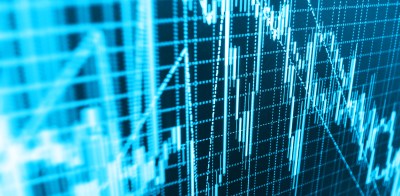Data as of April 30, 2022, unless otherwise noted.
Performance (total returns)
| Benchmarks | April 2022 | YTD |
| Bloomberg U.S. Aggregate Bond Index (Bloomberg Agg) | -3.79% | -9.50% |
| ICE BofAML U.S. High Yield Index (HY Bonds) | -3.64% | -7.99% |
| S&P/LSTA Leveraged Loan Index (Senior Secured Loans) | 0.22% | 0.11% |
Performance data quoted represents past performance and is no guarantee of future results. An investment cannot be made directly in an index.
Credit markets mixed in April: Markets continued to grapple with volatility in April, as rising interest rates and broader macroeconomic uncertainty sent most major asset classes sharply lower. The S&P 500 lost -8.72% while high yield bonds declined -3.64%, the second largest monthly decline for the HY Index since the Global Financial Crisis. Senior secured loans continued to benefit from their floating rate coupon, returning 0.22%. Bucking the year-to-date trend, CCC-rated bonds underperformed BB bonds in April, but on a year-to-date basis, duration-sensitive BB bonds have still suffered most. 10-year U.S. Treasury yields climbed once again in April, ending the month just below 3%, levels not seen since 2018. Core fixed income continues to suffer in this environment; the Bloomberg Agg was down -3.79% last month, its worst month since February 1980, and year-to-date declines of -9.50% have already eclipsed the index’s worst annual return on record. Despite a slight uptick in the number of loan defaults last month, by volume the Trailing 12-Month (TTM) default rate declined slightly, ending at 0.48% and 0.85% in high yield and loans, respectively.
Supply/demand update: Year to date, senior secured loans are down -0.10%, significantly outperforming high yield bonds which are down -4.51%. This performance dynamic is relatively unsurprising, as the floating rate nature of the loan asset class has made it less exposed to rising interest rates. However, the degree of outperformance by loans is, in our view, unlikely to continue at this rate. The average performance gap on an annual basis between the two markets is 2.15%, with high yield outperforming loans in 18 of the past 25 years. Loans are currently beating bonds by 4.41%, suggesting room for high yield to outperform in the coming quarters. The divergence in performance to-date has also caused the relative attractiveness of high yield bonds versus loans, as evidenced by the carry differential (difference in yield to maturities, not accounting for future rate increases, between the two asset classes), to rise to multi-year highs. Plus, given recent moves, high yield now yields 6.2%, up from just under 4% last year, marking the highest level of yield since July 2020.This dynamic will be one to watch in the coming quarters.
Key takeaways
- Credit markets were mixed in April. High yield bonds lost -3.64%, their second worst month since the Global Financial Crisis. Loans continue to benefit from their floating rate coupon, returning 0.22% last month.
- Rising long-term rates have pressured duration sensitive asset classes all year. The Bloomberg Agg lost -3.79% in April and is down -9.5% year to date, tripling its worst annual loss on record.
- Both high yield bond and senior secured loan markets have experienced slight supply deficits this year, although the underlying drivers of these technical dynamics differs.

